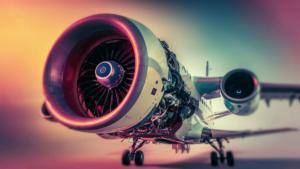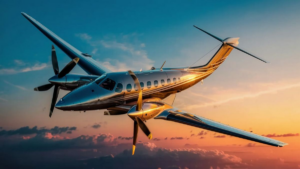When it comes to air travel, passengers often encounter the phenomenon known as turbulence. This natural occurrence can range from mild bumps to more pronounced jolts, sometimes causing discomfort or anxiety among travelers. However, turbulence is a common aspect of flying, and understanding its nature can alleviate concerns and misconceptions.
What is Turbulence?
Turbulence refers to irregular and chaotic airflow within the Earth’s atmosphere. It can manifest as sudden changes in airspeed or direction, resulting in fluctuations in altitude and movement of the aircraft. This phenomenon can occur at any altitude, from takeoff to landing, and even during cruising.
Causes of Turbulence
Turbulence can be caused by various factors, both atmospheric and man-made. Some of the primary causes include:
- Weather Conditions: Atmospheric disturbances such as thunderstorms, high winds, and temperature gradients can create turbulence.
- Mountainous Terrain: Airflow disruptions around mountains can lead to turbulence, particularly during descent or when flying near rugged landscapes.
- Jet Streams: High-altitude air currents, known as jet streams, can cause turbulence when encountering aircraft flying at different speeds or directions.
- Aircraft Wake: The wake turbulence generated by larger aircraft can affect smaller planes flying in their vicinity, causing sudden movements.
Types of Turbulence
Turbulence can be categorized into several types based on its origin and characteristics:
- Clear Air Turbulence (CAT): Occurs in cloudless skies and is often associated with jet streams or temperature differentials at high altitudes.
- Convective Turbulence: Caused by vertical air currents, typically associated with thunderstorms or convective activity.
- Mountain Wave Turbulence: Generated by airflow disruptions around mountains, resulting in wave-like patterns of turbulence downwind.
- Wake Turbulence: Created by the vortices trailing behind larger aircraft, posing a risk to smaller planes following behind.
Impact on Flight Safety
While turbulence can be unsettling for passengers, it poses minimal risk to modern aircraft. Airplanes are designed to withstand various levels of turbulence, and pilots undergo extensive training to navigate through turbulent conditions safely. Additionally, advancements in weather forecasting and aircraft technology enable pilots to anticipate and mitigate potential turbulence.
Managing Turbulence
Flight crews employ several strategies to manage turbulence and ensure passenger safety and comfort:
- Altitude Adjustment: Pilots may change altitude to find smoother air and minimize the effects of turbulence.
- Seatbelt Sign: Passengers are advised to keep their seatbelts fastened at all times, especially during turbulence, to prevent injuries.
- Weather Radar: Aircraft are equipped with weather radar systems to detect and avoid turbulent areas whenever possible.
- Communication: Pilots communicate with air traffic control and fellow pilots to share information about turbulence encounters and optimize flight paths.
Turbulence is a natural occurrence in aviation, influenced by various atmospheric and environmental factors. While it may cause temporary discomfort, turbulence is not a significant threat to flight safety. Understanding its causes and characteristics can help passengers and crew members alike navigate through turbulent conditions with confidence and ease.
Frequently Asked Questions about Air Turbulence
Here are some common questions and answers regarding air turbulence:
| Question | Answer |
|---|---|
| 1. Is turbulence dangerous? | Turbulence is generally not dangerous for modern aircraft. However, it can be uncomfortable for passengers. Pilots are trained to handle turbulence safely. |
| 2. Can turbulence cause a plane to crash? | No, turbulence alone cannot cause a plane to crash. Aircraft are designed to withstand various levels of turbulence. |
| 3. Can turbulence be predicted? | Yes, to some extent. Weather forecasting and onboard radar systems help pilots anticipate and avoid turbulent areas. |
| 4. How should passengers prepare for turbulence? | Passengers should keep their seatbelts fastened at all times when seated, even when the seatbelt sign is off. Follow crew instructions and remain calm. |
Effects of Turbulence on Passengers
While turbulence is generally safe, it can still affect passengers in various ways:
- Discomfort: Turbulence can cause discomfort, especially for those prone to motion sickness.
- Anxiety: Some passengers may experience anxiety during turbulent conditions.
- Spilled Drinks: Sudden movements can lead to spilled drinks or items falling from overhead compartments.
See also:






